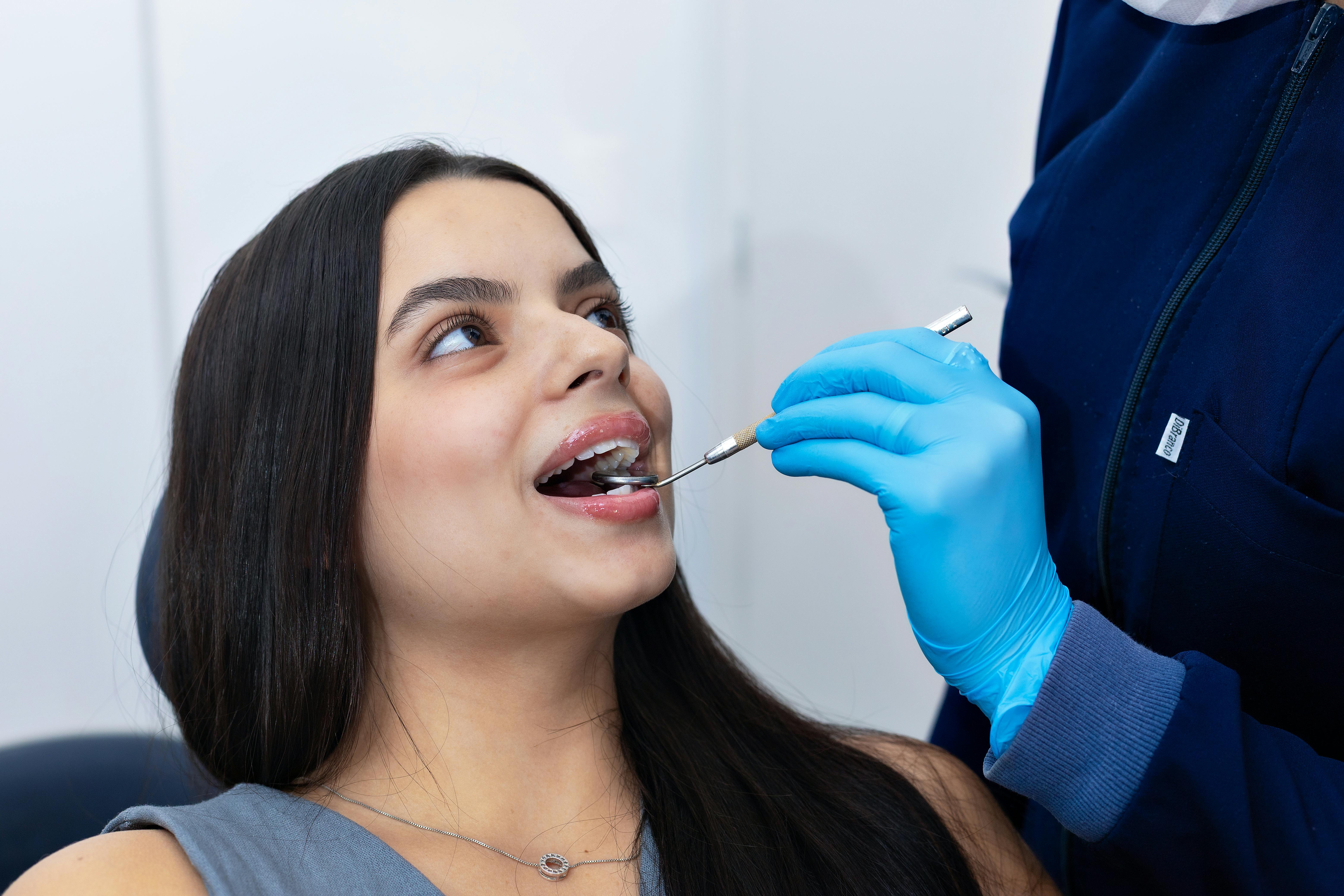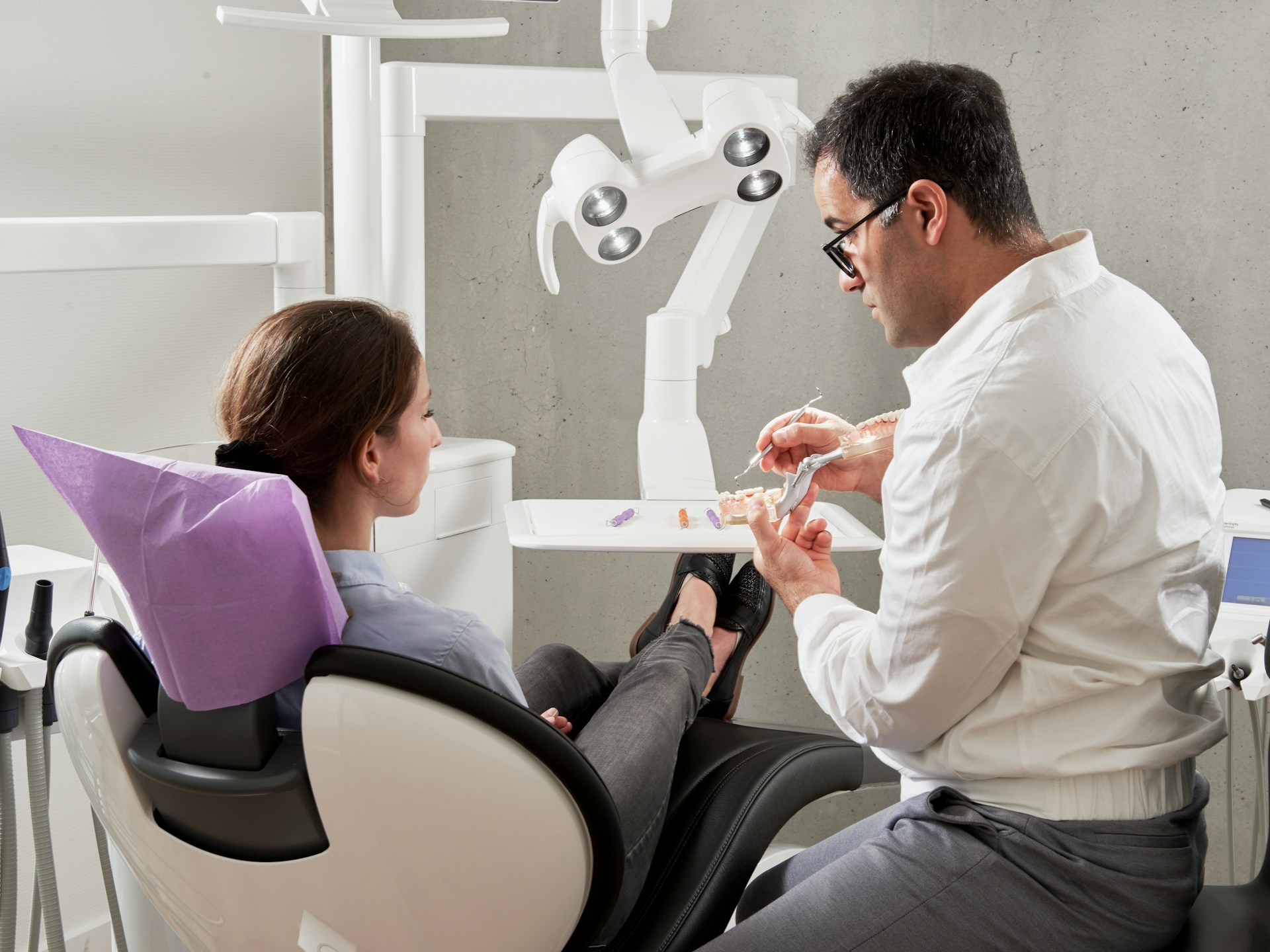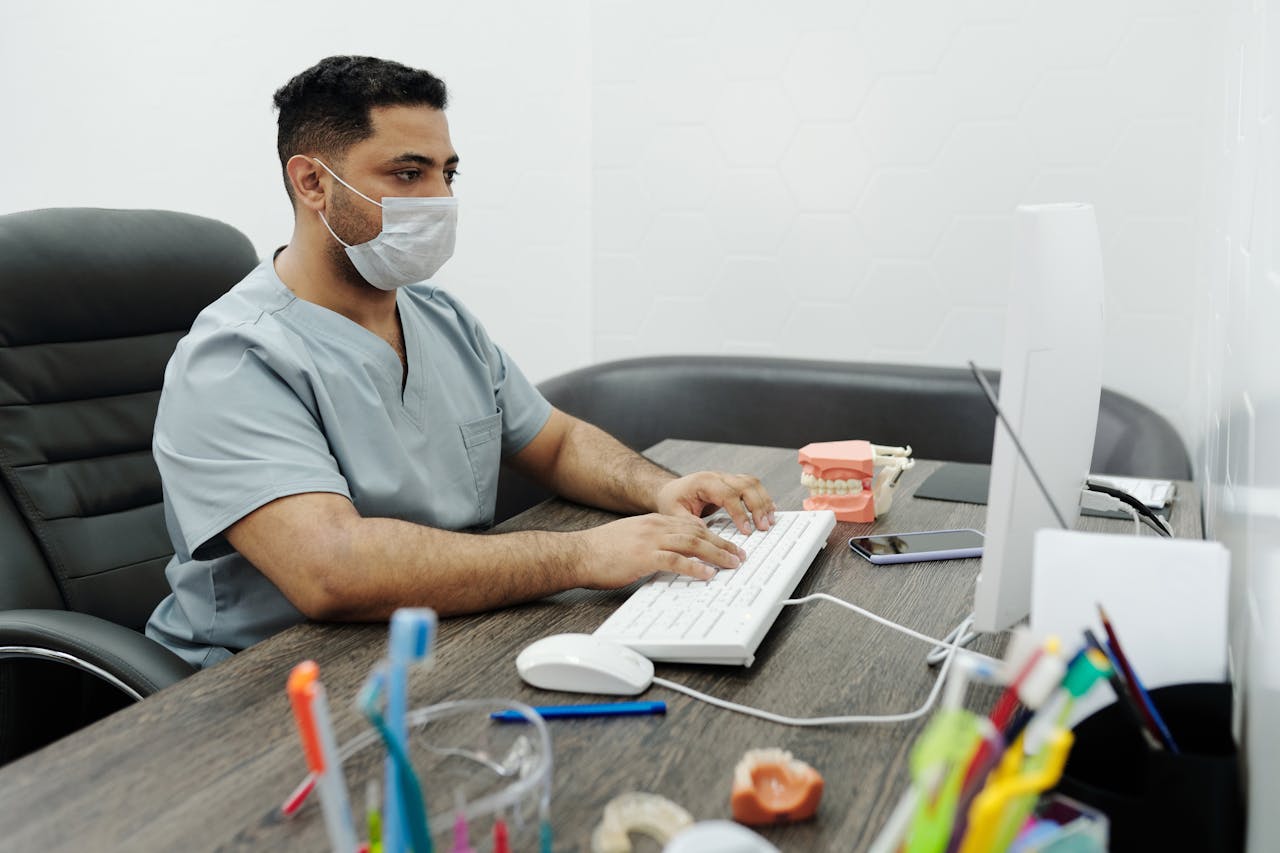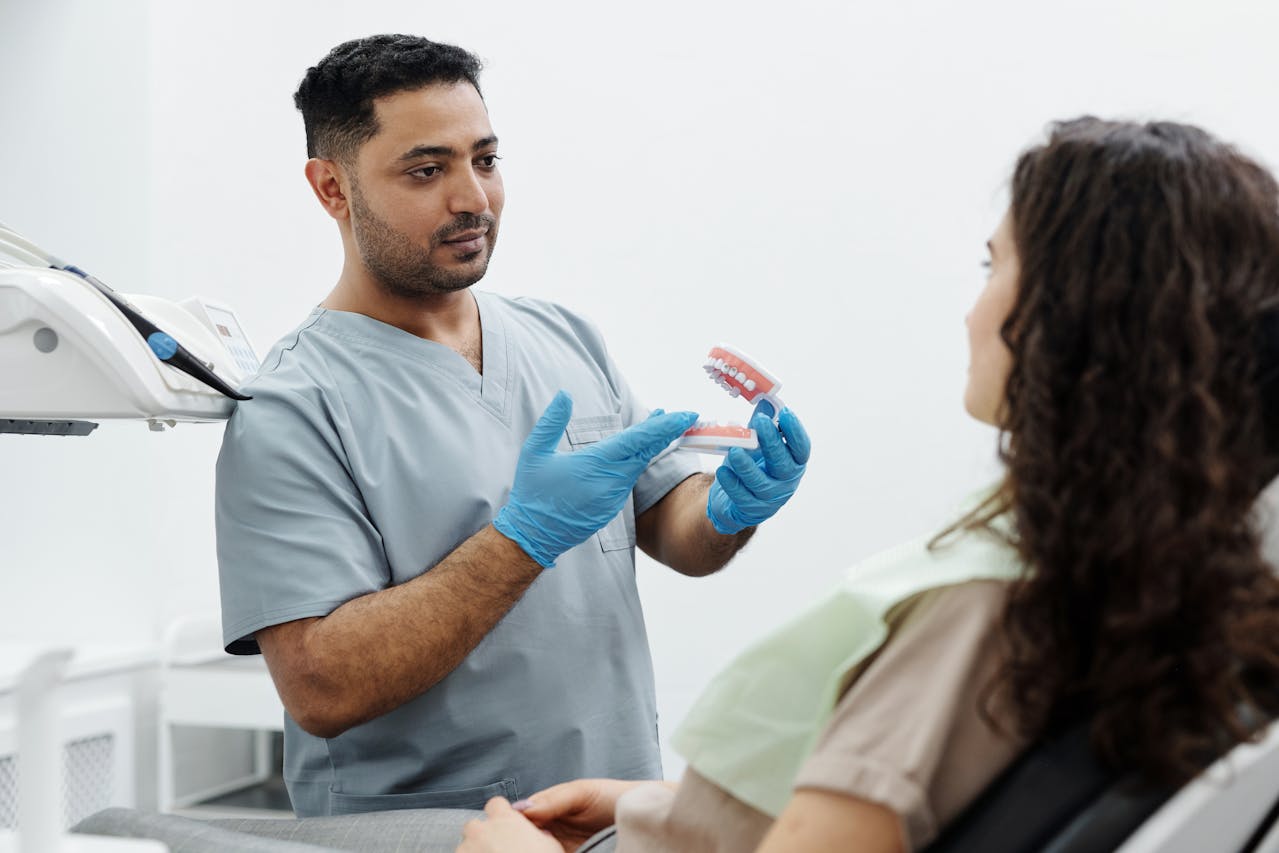How Much Do Dental Clinics Make in Michigan – 2025

Running a dental clinic in Michigan requires understanding the financial landscape that shapes practice profitability. The state's dental market presents varying income opportunities based on location, services offered, and operational efficiency.
Most dental clinics in Michigan earn between $16.97 and $21.59 per hour in average revenue, with top-performing practices reaching up to $27.24 per hour. These earnings fluctuate significantly based on patient volume, service mix, and practice management strategies that directly impact the bottom line for dental professionals across the state.
1) Average hourly pay for dental clinics in Michigan is approximately $20.51
Dental clinics in Michigan earn an average hourly pay of $20.51 based on current salary data. This figure represents the median rate for dental clinic positions across the state.
The pay range varies significantly depending on experience and location. Entry-level positions start at approximately $12.57 per hour, while experienced professionals can earn up to $27.24 per hour.
Most dental clinic salaries fall between $16.97 and $21.59 per hour. The 25th percentile earns around $16.97, while the 75th percentile reaches $21.59.
These wages reflect compensation for various dental clinic roles including dental assistants, hygienists, and administrative staff. Location within Michigan affects these rates, with urban areas typically offering higher compensation than rural regions.
Dental practice owners should consider these figures when budgeting for staffing costs and setting competitive wages to attract qualified candidates.
2) Most dental clinic wages range between $16.97 and $21.59 per hour
Dental clinic employees in Michigan typically earn between $16.97 and $21.59 per hour in 2025. This wage range covers most front desk staff, dental assistants, and support personnel.
The lower end of this range applies to entry-level positions. New hires with minimal experience often start at $16.97 per hour.
Experienced dental assistants and office managers earn closer to $21.59 per hour. Their advanced skills and clinic knowledge justify the higher wages.
Location within Michigan affects these wages. Urban areas like Detroit and Grand Rapids often pay above the average range. Rural clinics may offer wages at the lower end.
Most dental clinic wages range between $16.97 and $21.59 per hour based on current market data. These figures reflect the competitive nature of dental support roles.
Dental practices should budget accordingly when hiring staff. Understanding these wage ranges helps with proper staffing cost planning and employee retention strategies.
3) Higher-end dental clinics can earn up to $27.24 per hour
Premium dental practices in Michigan can achieve higher-end dental clinics can earn up to $27.24 per hour according to current market data. These rates represent the top tier of dental clinic earnings in the state.
Clinics reaching this pay level typically offer specialized services beyond basic cleanings and fillings. They may provide cosmetic dentistry, orthodontics, or advanced restorative procedures that command higher fees.
Location plays a key role in achieving these rates. Clinics in affluent areas of Michigan generally attract patients willing to pay premium prices for quality care.
The $27.24 hourly rate reflects gross revenue per hour of operation. This figure accounts for all clinic income before expenses like staff wages, equipment costs, and facility overhead.
Dental practices aiming for this income level need strong patient retention and efficient scheduling systems. They must maximize chair time while maintaining high service standards that justify premium pricing.
4) Lower-end hourly rates can be as low as $12.57
Entry-level dental clinic positions in Michigan start at remarkably low wages. Support staff like dental assistants and front desk workers often earn between $12.57 and $15 per hour.
These rates reflect the current job market for dental support roles. Many clinics hire inexperienced workers at these wages to manage operational costs.
Low-wage workers have seen historically fast real wage growth between 2019 and 2022. However, dental clinics still face pressure to keep labor costs down.
Rural Michigan practices typically offer lower starting wages than urban areas. Small independent clinics also tend to pay less than large dental chains or hospital-affiliated practices.
New dental assistants without certification often start at minimum wage levels. These positions require basic training but don't need extensive education or experience.
Dental offices using these wage levels often experience higher turnover rates. Staff frequently leave for better-paying positions once they gain experience in the field.
5) Dental clinics' earnings depend heavily on location and patient volume
Location plays a major role in determining how much dental clinics earn each year. Urban areas with higher populations typically generate more revenue than rural locations.
Dental clinic owner earnings vary widely based on where they operate. Clinics in busy city areas often serve more patients daily than those in smaller towns.
Patient volume directly impacts monthly income for dental practices. A clinic that sees 50 patients per day will earn significantly more than one seeing 20 patients daily.
Michigan dental clinics in Detroit or Grand Rapids typically have higher earning potential than those in smaller communities. The larger patient base creates more opportunities for consistent revenue.
High-traffic locations also allow clinics to offer more specialized services. These premium treatments often have better profit margins than basic cleanings and checkups.
Clinics serving 1,300 to 1,500 active patients can maintain steady cash flow throughout the year. Building a large patient base takes time but creates financial stability for practice owners.
The combination of prime location and strong patient volume helps Michigan dental clinics reach their full earning potential. Both factors work together to drive practice success.
6) Revenue is influenced by services like cleanings, fillings, and extractions
Dental cleanings serve as the foundational revenue driver for most practices in Michigan. These routine procedures typically account for 25-40% of total production in general dental practices.
Cleanings generate consistent patient flow since patients return every six months. This regular schedule creates predictable revenue streams that practices can rely on for financial planning.
Basic procedures like fillings and extractions provide additional revenue opportunities. These services often emerge from issues discovered during routine cleanings and examinations.
The combination of preventive and restorative services creates multiple touchpoints for revenue generation. Practices benefit from both scheduled maintenance visits and urgent treatment needs.
Michigan dental practices that maintain strong hygiene departments typically see higher overall production numbers. The hygiene schedule drives patient retention and treatment acceptance rates.
Emergency procedures and walk-in treatments add supplemental revenue beyond scheduled appointments. These services help practices maximize their daily production potential.
Practices can optimize revenue by ensuring efficient scheduling of these core services. Proper appointment management allows for maximum utilization of clinical time and resources.
7) Patient demographics affect clinic profitability
Patient demographics directly impact how much money dental clinics make in Michigan. Age, income level, and geographic location influence patient preferences and treatment decisions.
Younger patients typically need preventive care and basic procedures. Older patients often require more expensive treatments like crowns, bridges, and implants.
Higher-income patients can afford cosmetic procedures and pay for treatments without insurance delays. Lower-income areas may rely more heavily on Medicaid reimbursements, which pay less than private insurance.
Geographic location within Michigan affects patient volume and treatment acceptance rates. Urban areas often have more competition but higher patient density.
Insurance coverage varies significantly among different demographic groups. Patients with better insurance plans generate higher revenue per visit for the practice.
Demographic analysis helps clinics predict revenue patterns and plan services accordingly. Practices serving approximately 1,300 to 1,500 active patients need to understand their patient mix to maximize profitability.
Treatment acceptance rates differ across age groups and income levels. Younger professionals may prioritize cosmetic work while seniors focus on restorative needs.
Patient demographics also influence appointment scheduling patterns and no-show rates, which directly affect daily revenue generation.
8) Operational costs impact net income significantly
Operating expenses directly affect profit margins for dental practices in Michigan. These costs include rent, utilities, staff salaries, equipment, and marketing expenses.
High operating costs pose major threats to dental clinic profitability. Equipment purchases, supply costs, and staff wages can consume large portions of revenue if not managed properly.
Strategic cost control practices can reduce operational expenses by nearly 20%. This reduction significantly improves overall profitability for dental clinic owners.
Rent and facility costs represent fixed expenses that remain constant regardless of patient volume. Staff salaries typically account for the largest portion of variable operating costs.
Equipment maintenance and supply costs fluctuate based on patient load and services provided. Marketing expenses vary depending on practice growth strategies and local competition.
Dental practices must monitor operating expenses closely to maintain healthy profit margins. Poor cost management can quickly erode practice revenue and reduce owner take-home pay.
The key to maximizing net income lies in balancing quality patient care with efficient cost management. Practices that control overhead while maintaining service quality achieve better financial results.
9) Dental clinics often earn more with specialist services like orthodontics
Dental clinics that offer specialist services generate significantly higher revenue than general practice offices. Dental specialists can earn 20% to 105% more than general dentists due to advanced training and specialized procedures.
Orthodontic services command premium pricing in the Michigan market. These treatments typically involve multi-year payment plans that create steady revenue streams for clinics.
Oral surgeons earn the highest among specialists, averaging more than $300,000 annually. Endodontists, orthodontists, and periodontists follow closely behind with earnings between $250,000 and $300,000.
Clinics with multiple specialists under one roof maximize their earning potential. Patients appreciate the convenience of receiving different treatments at the same location.
The complexity of specialist procedures justifies higher fees. Insurance reimbursement rates for specialty work are typically better than routine cleanings and fillings.
Michigan dental clinics can increase profitability by hiring specialists or partnering with them. This strategy attracts more patients and increases the average value per patient visit.
10) Clinic efficiency and staff expertise contribute to earnings
Efficient dental clinics generate more revenue per hour of operation. Streamlined workflows and optimized scheduling allow practices to see more patients daily while maintaining quality care.
Well-trained staff members directly impact clinic profitability. Skilled dental hygienists and assistants can handle more procedures independently, freeing up dentists to focus on complex treatments that generate higher fees.
Staff productivity metrics help identify areas where efficiency can be improved. Tracking these numbers shows which team members contribute most to clinic revenue.
Experienced dental teams work faster and make fewer errors. This reduces chair time per patient and minimizes costly mistakes that require additional appointments or refunds.
Proper staff training on new procedures and technology increases service offerings. Clinics with skilled teams can provide more specialized treatments, boosting their average revenue per patient.
Technology integration requires staff expertise to maximize benefits. Teams that efficiently use digital tools and modern equipment help clinics operate more profitably than those relying on outdated methods.
Factors Affecting Dental Clinic Revenue in Michigan
Michigan dental clinics face unique revenue challenges tied to insurance reimbursement rates, diverse patient populations across urban and rural areas, and varying service offerings that significantly impact profitability. Understanding these factors helps clinic owners optimize their financial performance.
Insurance Reimbursements and Payer Mix
Michigan's dental insurance landscape directly affects clinic revenue through reimbursement rates and patient coverage levels. Delta Dental of Michigan dominates the state market, offering varying reimbursement schedules based on provider contracts.
Medicaid reimbursement rates in Michigan typically run 30-40% lower than private insurance rates. This creates challenges for clinics serving low-income populations in cities like Detroit and Flint.
Key Payer Mix Considerations:
- Private insurance: 60-80% reimbursement of usual fees
- Medicaid: 40-50% reimbursement rates
- Cash patients: 100% collection potential
- Medicare: Limited dental coverage
Clinics with higher percentages of private insurance patients generally achieve better profit margins than practices heavily dependent on government programs. Smart payer mix management involves balancing patient access with financial sustainability.
Patient Demographics and Market Size
Michigan's diverse population creates varying revenue opportunities across different regions. Urban areas like Detroit and Grand Rapids offer larger patient pools but face increased competition.
Rural Michigan counties often struggle with population decline and limited disposable income. These areas may have fewer competing practices but lower patient volumes overall.
Demographic Revenue Factors:
- Age groups: Seniors require more complex procedures
- Income levels: Higher earners seek cosmetic services
- Insurance coverage: Employed populations have better benefits
- Geographic location: Urban vs. rural accessibility
Dental clinic owner earnings in Michigan vary significantly based on these demographic factors. Practices in affluent suburbs often generate higher revenues than those in economically challenged areas.
Range of Dental Services Offered
Service diversification directly impacts revenue potential for Michigan dental clinics. Basic cleaning and preventive care generate steady but modest income compared to specialized procedures.
High-Revenue Services:
- Cosmetic dentistry: Veneers, whitening, smile makeovers
- Orthodontics: Traditional braces, clear aligners
- Oral surgery: Implants, extractions, bone grafts
- Periodontics: Deep cleanings, gum disease treatment
Practices offering comprehensive services typically achieve higher per-patient revenue. Specialty procedures often command premium fees and attract patients willing to pay out-of-pocket.
General dentistry alone limits revenue growth potential. Clinics adding orthodontics or cosmetic services can increase average patient value by 200-300% compared to basic preventive care only.
Current Financial Trends for Michigan Dental Practices
Michigan dental practices are experiencing growth momentum with a 10% increase in dentist numbers over the past year. Economic conditions favor expansion, though regional differences and market changes create varying financial outcomes across the state.
Average Annual Gross and Net Income
The typical dental practice in Michigan generates between $750,000 and $1.2 million in annual gross revenue. Solo practitioners often see lower ranges while multi-doctor practices achieve higher revenues.
Net income varies significantly based on practice efficiency and overhead management. Most practices maintain profit margins between 25% and 35% after expenses.
Key Revenue Factors:
- Patient volume and retention rates
- Insurance reimbursement levels
- Procedure mix and specialization
- Practice location and demographics
Michigan practices face rising operational costs including staff wages, equipment, and supply expenses. Dental practices need strategic approaches to maintain healthy margins amid these pressures.
Successful practices focus on fee optimization and payment flexibility to counter inflation impacts. Many dentists report the need to raise fees regularly to preserve profitability.
Impact of Economic Changes in 2025
Economic indicators suggest favorable conditions for dental practice growth throughout 2025. Patient demand remains strong despite broader economic uncertainties.
Insurance reimbursement rates show mixed trends. Some carriers maintain steady rates while others implement modest increases or decreases.
Notable Economic Influences:
- Inflation affecting supply and labor costs
- Interest rate changes impacting practice loans
- Consumer spending patterns on elective procedures
- Healthcare policy modifications
The dental industry outlook for 2025 indicates practices should prepare for growth opportunities. Market fundamentals remain solid with increasing patient acceptance of preventive care.
Practice owners report cautious optimism about expansion plans. Many are investing in technology and staff development to capture market opportunities.
Regional Variations Within Michigan
Metro Detroit practices typically generate higher gross revenues due to population density and higher fee schedules. Average annual revenues often exceed $1 million for established practices.
Grand Rapids and surrounding areas show steady growth with moderate revenue levels. Rural practices face different challenges with lower patient volumes but reduced overhead costs.
Regional Revenue Patterns:
- Southeast Michigan: $900K - $1.4M average gross
- West Michigan: $700K - $1.1M average gross
- Northern Michigan: $500K - $900K average gross
- Upper Peninsula: $400K - $750K average gross
Urban practices benefit from higher patient concentrations but face increased competition and overhead expenses. Rural practices serve wider geographic areas with different payer mixes.
Insurance penetration varies by region, affecting collection rates and patient payment patterns. Some areas show higher Medicaid participation while others rely more on private insurance and cash payments.
Frequently Asked Questions
Dental practice owners in Michigan face unique financial challenges and opportunities in 2025. Revenue expectations vary significantly based on location, patient demographics, and operational efficiency.
What is the average revenue for a dental clinic in Michigan this year?
Revenue for dental clinics in Michigan varies widely based on practice size and location. Most single-dentist practices generate between $800,000 and $1.2 million annually.
Multi-dentist practices typically earn $1.5 million to $3 million per year. Specialty practices often exceed these ranges due to higher service fees.
Urban clinics in Detroit and Grand Rapids generally outperform rural practices. Patient insurance coverage and payment methods also impact total revenue significantly.
What factors influence the profitability of dental clinics in Michigan?
Location remains the primary factor affecting clinic profitability. Practices in affluent suburbs consistently outperform those in rural areas.
Patient demographics directly impact revenue potential. Areas with higher income levels support premium services and cosmetic procedures.
Staff efficiency and overhead management determine profit margins. Clinics with streamlined operations maintain better financial performance.
Insurance network participation affects patient volume. Practices accepting major insurance plans typically see higher patient retention rates.
How have dental service prices changed in Michigan since 2023?
Dental service prices in Michigan increased 6-8% between 2023 and 2025. Basic cleanings now average $120-150 compared to $110-140 in 2023.
Crown procedures increased from $1,200-1,500 to $1,300-1,650. Root canal treatments rose from $800-1,200 to $900-1,350.
Cosmetic procedures saw the largest price increases. Teeth whitening services increased 10-12% over the two-year period.
Insurance reimbursement rates remained relatively stable. Many practices absorbed cost increases rather than passing them to patients.
What are the typical operating expenses for a dental clinic in Michigan?
Staff salaries represent 25-35% of total expenses for most Michigan dental practices. Dental hygienists and assistants comprise the largest portion of payroll costs.
Rent or mortgage payments typically account for 8-12% of revenue. Equipment financing and maintenance add another 5-8% to monthly expenses.
Supplies and materials cost 5-7% of revenue. Dental insurance and malpractice coverage range from 2-4% of total expenses.
Marketing and administrative costs vary from 3-6% of revenue. Technology upgrades and software subscriptions continue increasing annually.
How does the patient volume impact a dental clinic's income in Michigan?
Patient volume directly correlates with clinic profitability. Practices seeing 25-30 patients daily generate optimal revenue per dentist.
New patient acquisition costs average $200-300 per patient. Established patients provide higher profit margins through repeat visits.
No-show rates impact revenue significantly. Practices with rates above 15% experience substantial income loss.
Emergency appointments generate higher per-visit revenue. Clinics offering extended hours capture more urgent care patients.
What financial trends are impacting Michigan dental clinics in 2025?
Technology investments increased substantially in 2025. Digital imaging and CAD/CAM systems require significant upfront costs but improve efficiency.
Patient financing options expanded rapidly. Third-party payment plans help practices collect fees for expensive procedures.
Dental service organizations continue consolidating smaller practices. Independent practices face increased competition from corporate chains.
Telehealth consultations gained acceptance post-pandemic. Virtual appointments reduce overhead while maintaining patient relationships.









